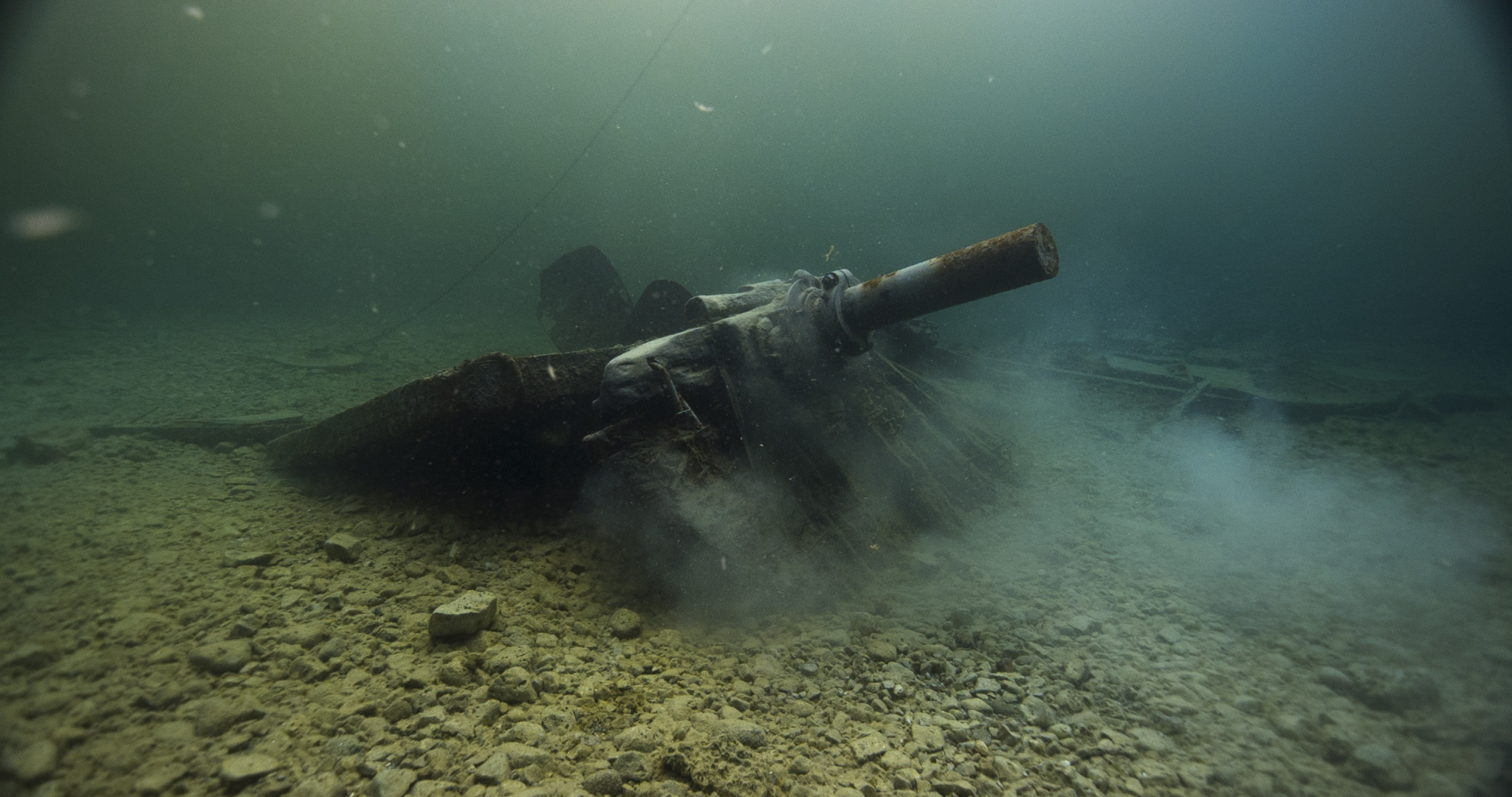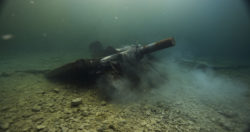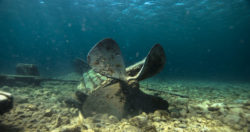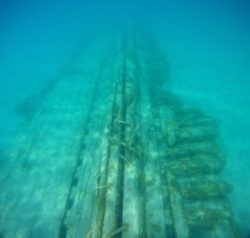
Limestone Legends: The Story of Three Thunder Bay Shipwrecks
Thunder Bay National Marine Sanctuary in Lake Huron is a history buff’s paradise. It protects nearly 100 historic shipwrecks within its boundaries, with many others beneath the Lake’s surface. The area is known famously as Shipwreck Alley due to the numerous wrecks that occurred due to poor visibility, rough waters, and shallow areas. The lake’s cold, fresh waters preserve the wrecks that mark the evolution and transformation of the shipping industry that has traversed the Great Lakes for well over 200 years.
Divers, paddlers, snorkelers, and glass-bottom boat passengers can all enjoy these hallmarks of our nation’s maritime history thanks to the crystal-clear waters of Lake Huron. Three notable wrecks showcase the ships that powered the booming limestone industry of the late 19th and early 20th centuries: the W.G. Mason, the Duncan City, and the Chester B. Jones. These wrecks are near one another and easily explored for a look back in time.

By preserving these resources — like the wreck of W.G. Mason, pictured here — we preserve parts of our history. The wrecks of Thunder Bay National Marine Sanctuary represent generations of life on the Great Lakes, and because many of them are accessible via diving and snorkeling, you can experience this history for yourself. Photo: David J. Ruck/NOAA
The W.G. Mason is a wooden motor tugboat that was built in the late 1800s. Built to support shipping, the W.G. Mason officially launched from Port Huron in Michigan by the Jenks Shipbuilding Company in 1898. In 1914, the Michigan Limestone and Chemical Company bought the tug to break up ice sheets and tow sailing vessels. Ten years later, in 1924, the company dismantled and abandoned W.G. Mason by sinking it. Its remains are well-preserved and lie in sanctuary waters that are only 13 feet deep, making it easy to see from the surface, especially its mechanical components and four-blade propeller.

The wreck of the tug Duncan City rests only 15 feet below the surface of Lake Huron in Thunder Bay National Marine Sanctuary. Much of the stern of this sunken vessel is still intact, offering divers a unique chance to explore one of the many treasures protected in Thunder Bay. Photo: David J. Ruck/NOAA
The Duncan City is another motorized tugboat that supported shipping on the Great Lakes. Its history parallels the W.G. Mason, and it was officially launched in 1883 by Rand and Burger, a Wisconsin-based shipbuilding company. The Michigan Limestone and Chemical Company bought Duncan City in 1918 to assist ships headed in and out of port and help the Rogers City limestone industry keep up with increasing shipping demands. Its tenure was about half that of the W.G. Mason, and by 1923 it was dismantled, abandoned, and sunk using limestone boulders. Duncan City lies beneath only 15 feet of water and its final resting place is only a few hundred feet from the W.G. Mason. The ship’s stern is mostly intact, and its mechanical components are also visible from the surface and underwater.

Underwater image of the hull remains of the wooden schooner Chester B. Jones. Photo: NOAA
Finally, the Chester B Jones, is a wooden schooner with three masts. It is 167 feet long and is the oldest of the three ships, first launched in 1873. Chester B. Jones sailed for an impressive 51 years, spending its later years as a barge that supported limestone quarry operations. It was abandoned and sunk in 1924, not long after W.G. Mason. This shipwreck transports observers back to pre-industrialized shipping days and is a stark contrast to the nearby W.G. Mason and Duncan City wrecks.
These three ships are only a small sample of the rich historic resources protected by Thunder Bay National Marine Sanctuary. To learn more about other wrecks and to see them through NOAA’s virtual reality dives, click here.
